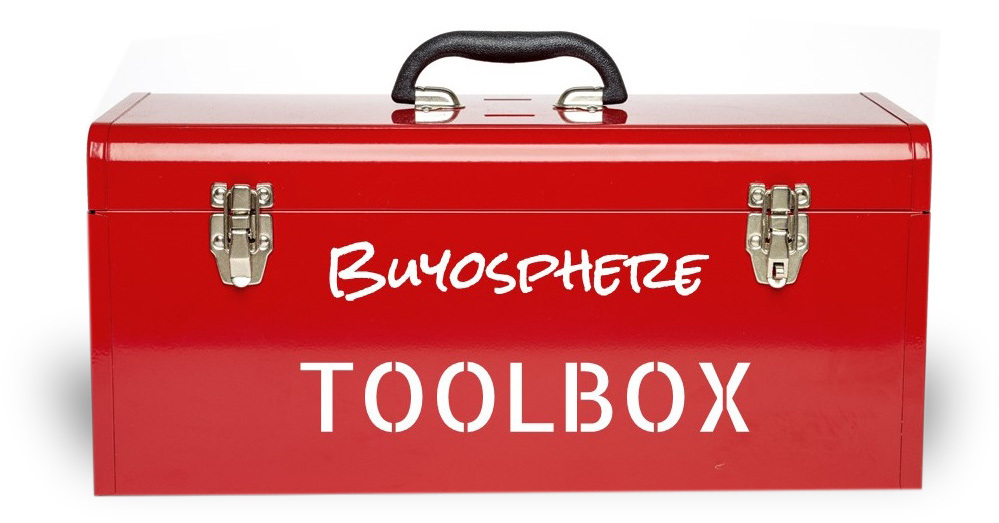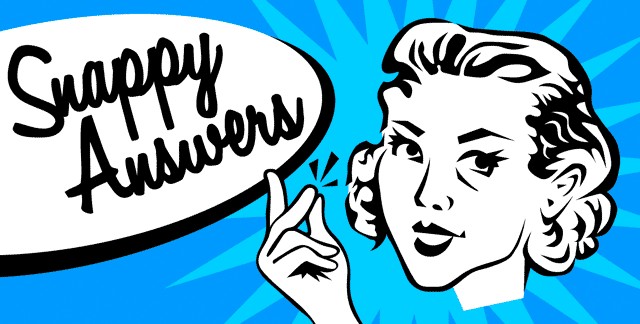Hello shoppers...
We're polishing off a week that's been stuffed with perplexing questions - "When will the oil stop leaking?" "Who is Sandra Bullock's newest beau?" "Is Kevin Cooney signaling me, or does his nose just itch?" "Wonder what I should buy Jonnie for his birthday in November?" "Is Chet Culver pregnant?" "Since the inside of Target sounds like a morgue, when will they start selling caskets?"
And then there was the second in a series of 10 customer service quiz questions which clogged your mental pipes Tuesday, cleverly titled The Customer Service Quiz II.
Today, let's flush, with Quiz II answers and explanations for each.
These answers are based upon training criteria I use with employees who work for my clients, addressing real life customer service scenarios.
Play along and see how you do.
1. There are four basic things that an employee should do when they encounter a patron - we refer to these as The Four Pillars of Customer Service. Name two of them.
Answer: The four pillars of customer service are simple yet powerful guidelines for how employees should engage customers. They include smiling at the customer, greeting the customer, engaging the customer and thanking the customer. Each of the four have specific criteria - for example, the greeting should be an open-ended question, and engaging a customer should include asking for their name, and using it throughout the conversation.
2. Name the popular Doors song whose first line embodies elements of the four pillars of customer service - with one particular question that is almost never asked of customers, by employees in a retail setting.
Answer: "Hello, I love you, won't you tell me your name?" Somewhere in Paris, The Lizard King is rolling inside his graffiti-covered tomb.
3. Most of us know how to shake someone's hand. Yet there's a more advanced, more powerful, more effective way for an employee to shake a customer's hand, that we train. Describe it.
Answer: Kids please do try this at home. You'll need a hand other than your own, and other than your other one since you can't shake it. (I've been trying for 10 minutes.)
Reach your hand out and grasp the other person's hand as you would with a normal handshake. As you grasp it, turn your hand to the right, exposing the top of the person's hand, which you then cover with your left hand.
This more intimate handshake provides greater touch of skin, which generates more endorphins, plus it's a nurturing gesture, telling the person they can trust you, that you will take care of them.
Try it!
4. Speaking of the four pillars of customer service - there's a fifth one, often ignored by retailers (to their detriment) but embraced by specific business categories, including the automotive industry. What is it?
Answer: It's amazing how often this fifth pillar of customer service is ignored, especially considering how important it is for creating a deeper connection to consumers.
The fifth pillar is follow - up. Get the shopper's contact info, and not just the usual stuff like phone number and address but also the social networking portals like email address, Facebook and Twitter handles.
Business owners are often afraid to ask for this information because they feel like they're being intrusive and don't want to upset the customer. But when properly explained how it will be used, the majority of customers will gladly provide it.
5. Which one of these phone calls demonstrates the most effective customer service?
A. "I'm going to put you on hold for a few minutes while I check that information." (music plays)
B. "I'm going to check that information - it'll take me a few minutes and might sound quiet but I'm still right here." (silence)
C. "I'm going to put you on hold for a few minutes while I check that information." (silence)
D. "I'm going to check that information and call you right back - it'll just take a few minutes."
Answer: All four stink - primarily because none of them asks permission from the customer on the other end of the phone.
Assuming that permission is given, I like D, offering to call the customer back. An employee showing that they don't want to waste the customer's time, will score points with the customer, who will likely decline the offer and instead stay on the line, now less stressed by the delay because they've made a connection, besides the phone call.
6. Which one of these statements would be considered most appropriate for a cashier to say to a customer?
A. "You're the third customer who has bought these pizza rolls today. I better try them."
B. "Oh you'll love these frozen pizza rolls. My boyfriend and I tried them last night and they were delicious."
C. "Hmmm...pizza rolls. Never seen these. I'll have to try them."
D. "Wow - looks like you're going to have a great dinner tonight, with these pizza rolls."
Answer: C is the worst because it shows the employee isn't familiar with the stuff they're selling, D is almost as bad, as it makes assumptions about the shopper's intentions plus feels intrusive. B also assumes that just because the employee likes the product, so will the customer.
The outright winner is A. It communicates that the consumer has made a wise decision by selecting something that's popular with other customers, and keeping up with the Joneses has the most clout with patrons. It also turns the tables on who is selling and who is buying, putting the employee in the shoes of the customer, and creating a bond with the one they're ringing up.
If you work in retail, try a version of A with a customer - they'll love it!
7. When BP says there are 5,000 gallons a day leaking from the ruptured oil pipeline in the Gulf, but there's actually 247,102, 594, it's a twisted example of this customer service principle:
Answer: There are a lot of responses you could insert here that would be suspiciously similar to what's been said during late night TV monologues.
From a marketing standpoint, the answer, hopefully, was obvious - under promise, and over-deliver.
8. The "Gap" retail philosophy is:
A. Always get customers to try as many of your products as possible
B. Always have more than one sales person assisting a customer
C. Always compliment the customer's choice, even if it's terrible and you know it
D. Always connect one product to another - "link it" - so customers feel compelled to purchase more
Answer: All four are correct - A, B, C and D.
As much as The Gap's selling techniques have been mocked and even criticized, there is much for retail store employees to learn from them.
9. What percentage of revenue do most businesses lose, on average, due to poor customer service?
Answer: According to multiple studies, starting in 1989 with consumer researcher Steve Hoisington and supported by research gathered by The University of Michigan in 1994 and The Harvard Business School in 1998, poor customer service can account for a 10-20% loss of retail revenue. In business categories where there are fewer transactions but bigger ticket items, the losses tend to be larger, reasonably enough.
No matter how the math is done, the amount of revenue lost is staggering - which certainly makes it worth the effort by owners, managers and employees, to improve the quality of their customer service.
10. Which of these actions by an employee will generate the most revenue for a store?
A. Getting the customer's contact information
B. Smiling at the customer
C. Using the customer's name
D. Mentioning sales/discounts going on in the store
E. Giving something away in return for the purchase
Answer: B
It is my contention - and this is based on instinct, analysis and dozens of interviews with shoppers, employees and business owners - that nothing will have a more positive impact on generating revenue for a retail store, than training and even requiring employees to smile at customers.
Frown if you will, but 80% of the decisions we make are based upon how we feel, not what we think. Customers like going back to stores where employees are happy, because it makes them happy, and those return visits create a more personal bond which translates into loyalty and creates a perpetuating circle that puts untold extra dollars into the cash register, over time.
11. What is a retail store's biggest competitor?
A. Big box stores
B. Customer ambivalence
C. The Internet
D. A new store that just opened down the street, selling the same thing
Answer: B
And it's not even close. Consumers are smarter today than they've ever been - not just about knowing about the products they want, but also about understanding that there's very little that they really need. We have an innate ability to separate the two, cool ads for the Ipad notwithstanding.
Yet that consumer ambivalence has diminished the importance of traditional marketing - radio, TV, print, which still tries, however un-furtively, to generate a sense of urgency, even panic, in shoppers, even when savvy consumers know full well how companies play that game and so are much more comfortable in delaying purchases, or going without them.
12. "Engage a customer like you would engage your _____________"
Answer: "...mom."
Most of us (if we were raised right) are unfailingly polite, thoughtful, courteous and loving towards our mothers. There are exceptions - but if you're looking for a template for how to engage consumers, look no further than the woman who brought you into this world, nurtured you, looked over you and gave you a sense of worth.
Can't imagine a better template than that.
How did you do? I hope you passed with red, white and blue flying colors. :)
Speaking of which, have a happy and safe Memorial Holiday Weekend - with Mom, Dad, family and friends. See you back here on Monday, with a special tribute to those who give the ultimate "customer service."
Jonnie Wright is a customer service evaluator and trainer, professional secret shopper, marketing strategist and host of The Unsecret Shopper Radio Show, Saturday mornings 8-9am on 1350 KRNT. Email Jonnie at jonniewright@thebuyosphere.com.

Open The Buyosphere Toolbox to get FREE exclusive access to proven tools that will help you generate higher shop sales and profits - delivered weekly, right to your inbox!

